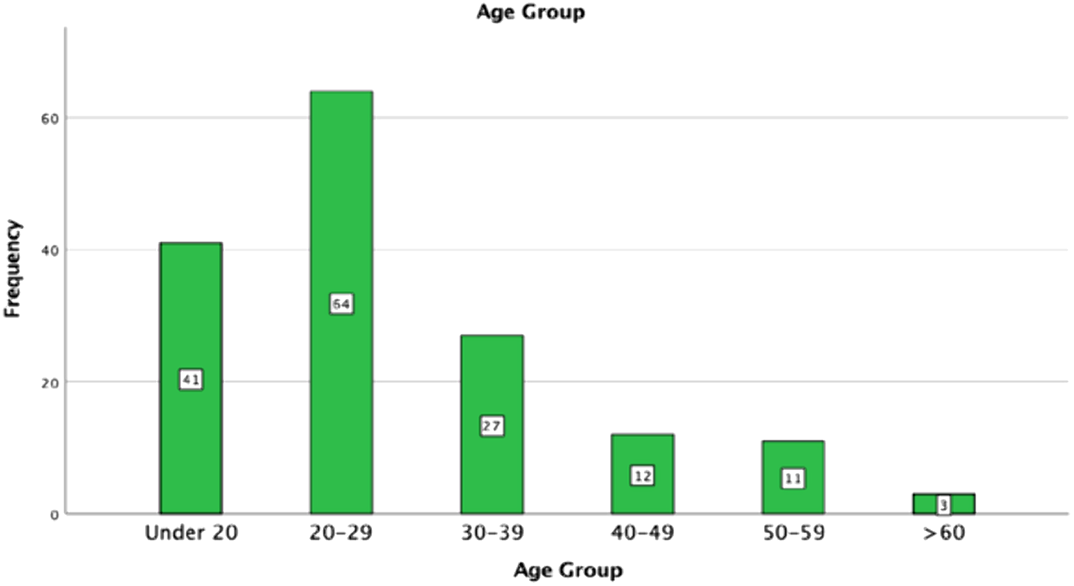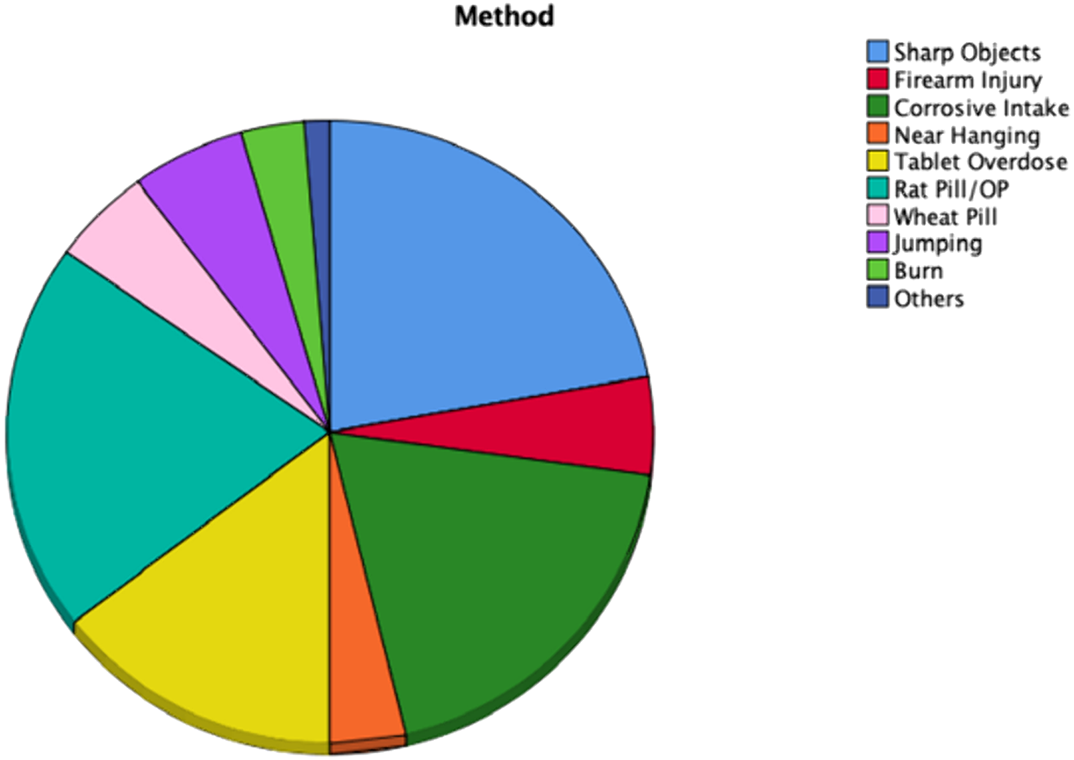No CrossRef data available.
Published online by Cambridge University Press: 01 September 2022
Self‑harm is an ‘act of self‑poisoning or self‑injury carried out by a person, irrespective of their motivation’. A history of self-harm is linked with suicide risk. A study in Pakistan found self-harm to be more common in young people with unemployment and interpersonal difficulties as common triggers. Expanding liaison psychiatry services leads to an earlier assessment of patients with self-harm.
To study the demographic and clinical variables of patients along with methods and precipitating factors of self-harm.
A retrospective chart review of patients presenting with self-harm seen as a part of liaison psychiatry from October 2018 to June 2021.
A total of 168 cases were seen of which 10 were excluded due to incomplete data. Of 158 cases gender split was roughly in the middle, with 49.4% males (n=78) and 50.6% females (n=80). The mean age of patients was 27.59 with a range of 12-70, 40.5% belonged to the age group of 20-29 (n=64) (Figure 1).

77.8% (n=123) had a past psychiatric history. The most common being depressive disorder 31.6% (n=50) and borderline personality disorder 30.4% (n=48). 35.4% of patients reportedly had previous attempts of self-harm. The most common methods being the use of sharp objects, rat-pill poisoning, and corrosive intake (Figure 2).

Conflicts with family and relationship difficulties were reported to be the most common precipitating factors.
Self-harm is a challenging and frequent presentation. Patients may present with diverse characteristics and varying needs. Hence physicians must be prepared for timely liaison and prompt management.
No significant relationships.
Comments
No Comments have been published for this article.